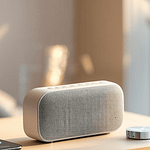
Reducing Utility Bills: Tips and Tricks for Lowering Your Monthly Expenses
Reducing utility bills is a priority for many households. With the rising cost of energy, it’s becoming increasingly important to find ways to save money on energy bills. Fortunately, there are several ways to reduce energy consumption and lower utility bills. In this article, we will discuss some of the most effective ways to reduce energy costs and save money.

Assessing your energy consumption is the first step in reducing your utility bills. Start by looking at your energy bills to see how much you’re spending on heating, cooling, and other utilities. You can also use an energy monitor to track your energy usage and identify areas where you can save. Once you know where your energy is going, you can start making changes to reduce your consumption.
Improving heating and cooling efficiency is another effective way to reduce energy costs. This can be done by upgrading to a more efficient HVAC system, sealing air leaks, and adding insulation. Water heating and usage is also an important factor to consider when trying to reduce energy costs. Switching to a low-flow showerhead, fixing leaks, and washing clothes in cold water are all effective ways to save money on your water bill.
Overview on Reducing Utility Bills
Key Takeaways
- Assessing your energy consumption is the first step in reducing utility bills.
- Improving heating and cooling efficiency can significantly reduce energy costs.
- Making small changes to your water usage can help to lower your water bill.
Assessing Your Energy Consumption
When it comes to reducing utility bills, the first step is to assess your energy consumption. This involves conducting a home energy audit and understanding your utility bills. By doing so, we can identify areas where we can reduce our energy use and save money.
Conducting a Home Energy Audit
A home energy audit is a comprehensive assessment of your home’s energy use. It can be conducted by a professional energy auditor or you can do it yourself. A professional energy auditor will use specialized tools and equipment to identify areas where your home is losing energy and provide recommendations on how to improve energy efficiency. On the other hand, a DIY audit involves a visual inspection of your home and identifying areas where energy is being wasted.
During a home energy audit, we can identify areas where we can reduce our electricity consumption. For instance, we can check for air leaks and ensure that our home is properly insulated. We can also assess our appliances and electronics and replace them with energy-efficient models. By doing so, we can reduce our energy use and save money on our utility bills.
Understanding Your Utility Bills
Understanding your utility bills is another important step in reducing utility bills. We should review our bills regularly and understand how our energy use affects our bills. This involves understanding the different charges on our bills, such as the energy charge, delivery charge, and taxes. By doing so, we can identify areas where we can reduce our energy use and save money.
We can also use our utility bills to track our electricity consumption. By monitoring our energy use, we can identify trends and adjust our energy use accordingly. For instance, we can reduce our energy use during peak hours to avoid high electricity rates.
In conclusion, assessing our energy consumption is an important step in reducing utility bills. By conducting a home energy audit and understanding our utility bills, we can identify areas where we can reduce our energy use and save money.
Improving Heating and Cooling Efficiency
When it comes to reducing utility bills, improving the efficiency of your heating and cooling system is a great place to start. Here are some tips to help you do just that.
Maintaining Your HVAC System
Regular maintenance of your HVAC system is essential to keep it running efficiently. This includes changing the air filter regularly, cleaning the coils, and checking the refrigerant levels. A well-maintained system can save you up to 15% on your heating and cooling costs.
Upgrading to a Programmable Thermostat
Upgrading to a programmable thermostat can help you save money on your heating and cooling bills. With a programmable thermostat, you can set the temperature to automatically adjust when you’re not home or when you’re sleeping. This can save you up to 10% on your heating and cooling costs.
Enhancing Home Insulation
Enhancing your home insulation can help you save money on your heating and cooling bills. Insulating your attic, walls, and floors can help keep the warm air inside during the winter and the cool air inside during the summer. You can also seal any gaps or cracks around windows and doors to prevent air leaks. According to ENERGY STAR, sealing and insulating ducts can improve the efficiency of your heating and cooling system by as much as 20%.
By following these tips, we can improve the efficiency of our heating and cooling system and reduce our utility bills.
Water Heating and Usage

Reducing hot water usage is one of the most effective ways to lower utility bills. Hot water usage accounts for approximately 18% of the total energy bill in a typical household. By reducing hot water use, we can significantly reduce our utility bills.
Installing Low-Flow Showerheads
One of the easiest ways to reduce hot water usage is by installing low-flow showerheads. Low-flow showerheads reduce the amount of water used while showering, which in turn reduces the amount of hot water needed. This can result in significant savings on utility bills over time.
Optimizing Dishwasher and Washing Machine Use
Dishwashers and washing machines are two of the biggest users of hot water in a household. By optimizing their use, we can reduce hot water usage and lower our utility bills. One way to optimize dishwasher and washing machine use is by running full loads. Running full loads reduces the number of cycles needed, which in turn reduces the amount of hot water used.
Taking Shorter Showers
Taking shorter showers is another effective way to reduce hot water usage. By reducing the time spent in the shower, we can significantly reduce the amount of hot water used. This can result in significant savings on utility bills over time.
In conclusion, reducing hot water usage is an effective way to lower utility bills. Installing low-flow showerheads, optimizing dishwasher and washing machine use, and taking shorter showers are all effective ways to reduce hot water usage and lower utility bills. By implementing these strategies, we can save money and reduce our environmental impact.
Electrical Appliances and Lighting

When it comes to reducing utility bills, one of the most effective ways is to reduce the electricity consumption of your appliances and lighting. In this section, we will discuss some simple yet effective ways to reduce your electricity consumption.
Switching to LED Light Bulbs
One of the easiest ways to reduce your electricity consumption is to switch to LED light bulbs. LED bulbs are more energy-efficient than incandescent bulbs and can last up to 25 times longer. They are also available in a range of colors and brightness levels, making them suitable for all lighting needs.
Using Smart Power Strips
Smart power strips are an excellent way to reduce the electricity consumption of your appliances. These power strips can detect when an appliance is not in use and turn it off automatically. They can also be programmed to turn off appliances at specific times of the day. By using smart power strips, you can reduce the amount of standby power consumed by your appliances.
Setting Appropriate Freezer Temperature
Setting the appropriate temperature for your freezer can also help reduce your electricity consumption. Freezers should be set to between 0 and 5 degrees Fahrenheit (-18 to -15 degrees Celsius) to ensure that food is kept at a safe temperature. Setting the temperature any lower than this can increase your electricity consumption without providing any additional benefits.
In conclusion, reducing the electricity consumption of your appliances and lighting is an effective way to reduce your electric bill. By switching to LED light bulbs, using smart power strips, and setting the appropriate temperature for your freezer, you can significantly reduce your electricity consumption.
Sealing and Weatherproofing

Reducing air leaks and weatherproofing your home can help you save money on your utility bills. We recommend focusing on two key areas: detecting and sealing air leaks, and applying weatherstripping and caulking.
Detecting and Sealing Air Leaks
The first step in reducing air leaks is to detect them. A blower door test can help identify areas where air is leaking from your home. Once you’ve identified the areas with air leaks, you can seal them up using caulk or foam sealant. Common areas where air leaks occur include windows, doors, and electrical outlets.
In addition to sealing air leaks, adding insulation to your home can also help reduce energy costs. Insulation helps keep your home warm in the winter and cool in the summer by preventing heat transfer. We recommend adding insulation to your attic, walls, and floors over unheated spaces.
Applying Weatherstripping and Caulking
Weatherstripping and caulking are two effective ways to weatherproof your home. Weatherstripping is used to seal gaps around windows and doors, while caulking is used to seal gaps in walls and ceilings.
When applying weatherstripping, be sure to choose the right type of material for your needs. Felt weatherstripping is a good choice for sealing gaps around windows and doors, while adhesive-backed foam weatherstripping is better for larger gaps.
Caulking should be used to seal gaps around windows, doors, and other areas where air can leak into your home. Silicone caulk is a good choice for areas that are exposed to weather, while latex caulk is better for indoor use.
By following these tips and weatherproofing your home, you can save money on your utility bills and reduce your energy consumption.
Choosing the Right Energy Provider

When it comes to reducing utility bills, choosing the right energy provider can make a big difference. We recommend doing some research to find the provider that best fits your household’s needs and budget. Here are some factors to consider:
- Electricity consumption: Look for a provider that offers plans with lower rates for lower consumption. This can help you save money if you don’t use a lot of electricity.
- Off-peak hours: Some providers offer plans with lower rates during off-peak hours. If you’re able to shift some of your electricity usage to these times, you may be able to save money.
- Natural gas: If your home uses natural gas, look for a provider that offers competitive rates. You may also want to consider a provider that offers a fixed rate plan, which can help you budget more effectively.
- Propane: If your home uses propane, look for a provider that offers competitive rates and reliable delivery. You may also want to consider a provider that offers a budget plan, which can help you spread your propane costs evenly throughout the year.
- Household budgets: Consider your household’s budget when choosing an energy provider. Look for a provider that offers plans with rates that fit within your budget.
- Department of Energy: The Department of Energy provides resources to help consumers choose an energy provider. Check out their website for more information.
By taking the time to choose the right energy provider, you can save money on your utility bills and ensure that your household’s energy needs are met.







































